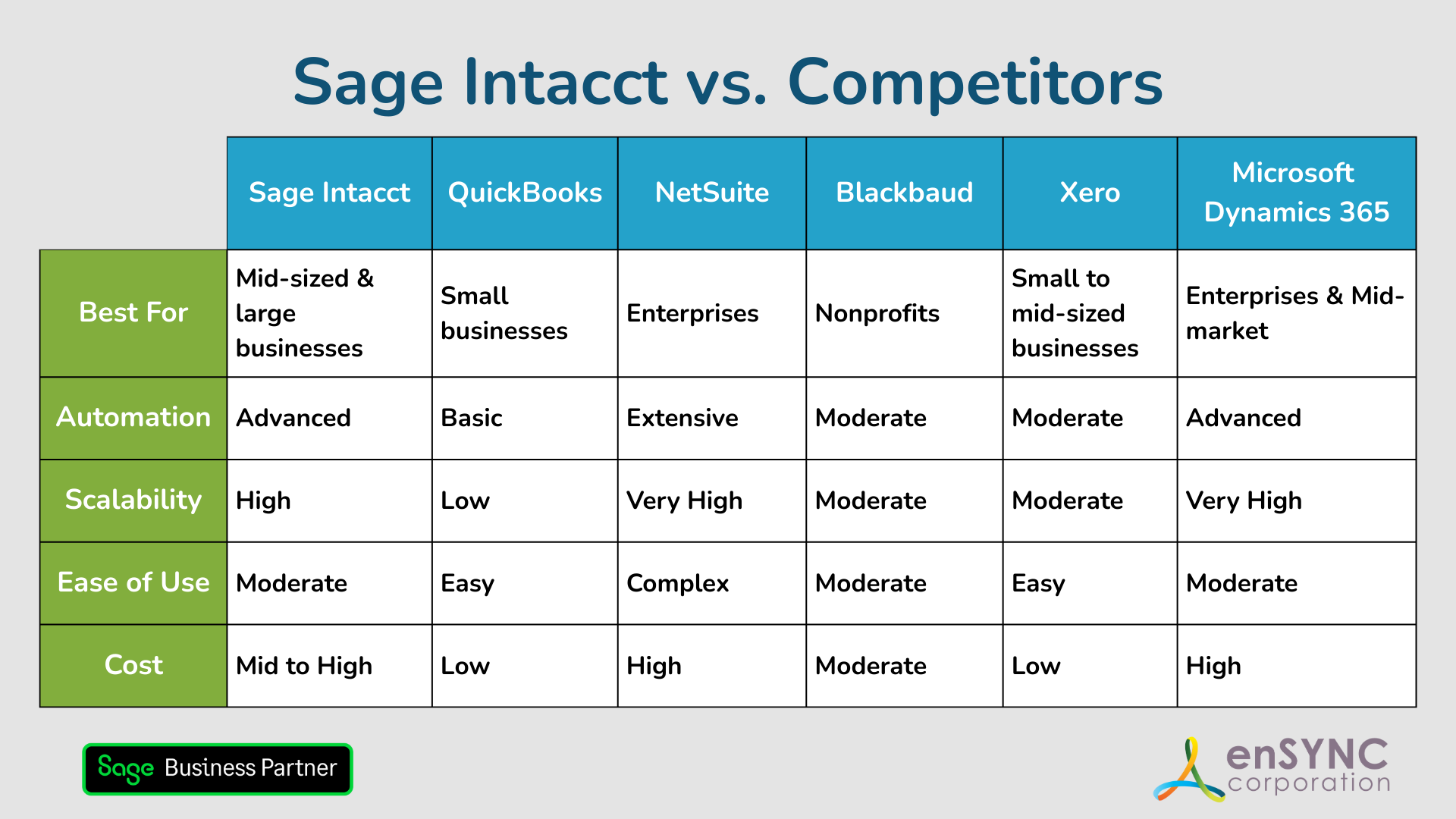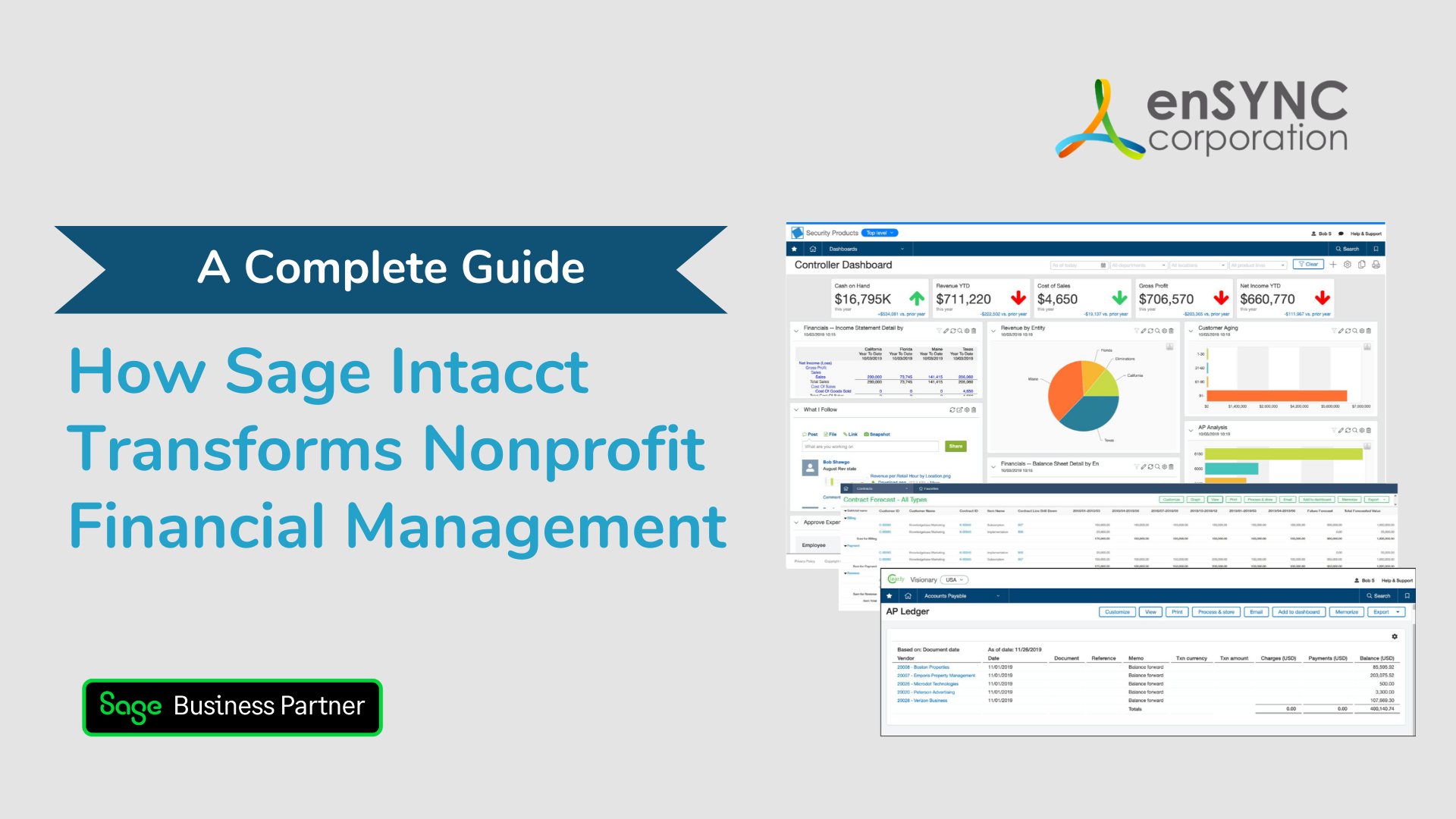Grant & fundraising | Software solutions | Nonprofits
8 Ways Integrated Nonprofit Software Helps Nonprofits Increase Revenue
March 9, 2021
|
Traditional accounting methods produce financial reports at predictable yearly and quarterly intervals so that management can use them to make decisions for the next period. While they are able to provide indications of financial stability, revenue streams, and membership growth, the time lags prevented managers from making timely critical decisions.
Modern financial software can help a staff member, nonprofit leader, executive director, or board member understand the organization’s current state through dashboards that use near real-time data. Rather than base decisions on the previous quarter’s earnings, management benefits from real-time reports when making important decisions, and that can have a long-term impact on the organization’s overall success.
Financial software powers nonprofit growth strategies
Staying true to budgets and keeping up with timelines is especially challenging for nonprofit organizations. The nonprofit sector has unique financial needs that require striking a balance between making a profound social impact and maintaining financial stability.
Nonprofits can learn some lessons from management consulting and for-profit companies when it comes to responsible financial planning and growth strategies. The stakeholders between both types of organizations are undoubtedly different, however, the same financial and marketing rules apply. Since all organizations abide by the same rules and operate in the same economic environment, nonprofit organizations must learn the techniques used by for-profit companies to thrive long-term.
The nonprofit sector has unique financial needs that require striking a balance between making a profound social impact and maintaining financial stability.
The use of innovative technology has revolutionized the way businesses operate. Nonprofits can leverage the use of innovative software to upgrade many aspects of their operation for numerous benefits. Here are some ways integrated nonprofit software can help nonprofits grow their revenues and remain transparent and accountable while staying true to their mission:
1. Build trust with increased transparency
Transparency is vital to the reputation of an organization. With the economy in a current downtrend, there has never been a more critical time to demonstrate accountability about an organization’s activities, how it obtains its funds, and how they are used across the organization.
Modern financial software helps accounting staff produce detailed real-time reports that demonstrate proper stewardship of all incoming funds. Through the use of dashboards, managers can create reports that show how much money was raised and demonstrate how it was spent, down to the last cent.
2. Save time through automation
Nonprofit financial software helps organizations save valuable time while reducing complexity. Innovative tools let staff generate statements and complete forms quickly and efficiently through an automated reporting system that saves both time and money.
Antiquated spreadsheet-based systems require time to export data from the accounting system to generate financial reports. Besides lacking functionality, spreadsheet programs do not have the type of features needed to streamline budgets and make planning decisions. Spreadsheets also run the risk of complications through hard-coded formulas, and that can often cause reconciliation problems with an accounting system.
Modern financial software releases accounting professionals from the burdens of spreadsheets while providing tools that automate their workflow for efficient financial reporting.
3. Generate free-flowing ideas through increased collaboration
Most modern nonprofit financial software programs are cloud-based - a term that refers to software applications and other services or resources that are available on-demand via the internet.
While staying safe and secure, an organization’s financial data is always available when it’s in the cloud. That means that users can tap into it wherever there is an internet connection for increased collaboration and enhanced decision making. This allows different departments from across the organization - from fundraising to membership administration - to streamline activities with real-time data that keeps them informed of where the organization is at any given time.
4. Leverage performance analytics to focus on goals
Analytics that assess financial performance helps profit-seeking businesses measure how well they use their resources to generate revenues in both the long and short term. Nonprofits can leverage those same principles to measure how well donations and other funds are being used to fulfill the goals of the organization. Besides assessing these factors, performance analytics can also be used to measure the health of the nonprofit organization over a given period of time.
Integrated nonprofit accounting software helps accounting professionals obtain information critical to decision making through financial insights that are unique to the organization. Staying on course and keeping focus on goals is facilitated through the use of quantitative data metrics that show how well the organization is fulfilling its mission. Modern financial software streamlines the process and makes it possible through the use of data that demonstrates the nonprofit’s performance in real time.
5. Increase efficiency and reduce costs
While cost reduction and improved efficiency may not bring in more revenue, it does increase profit. Hours spent doing tedious and time-consuming accounting tasks are done away with the use of modern tools that give accounting professionals the flexibility to create and modify their workflows, automations, and reports without any coding or advanced technical skills.
Nonprofit accounting software also provides convenient consolidation features that allow managers to organize multiple grants and donors with different currencies from different locations. An investment in integrated nonprofit software benefits nonprofit organizations in the long run through increased efficiency and cost savings that can pay big dividends over time.
6. Set goals using advanced forecasting and budgeting tools
Setting goals is invaluable to achieving a nonprofit organization’s mission. Setting objectives ensures those goals are achieved. Modern accounting software puts those elements into action through tools that automate the budgeting process using real-time data so managers know where the organization is headed.
Staying on top of budgets can be a challenge, particularly for organizations that are continually growing and evolving. Accounting software helps managers make sure that everything is going according to plan and gives them the tools to make timely decisions with data that keeps them up to date at all times.
7. Work smarter through seamless integration
Integrated accounting software helps finance teams stay connected with other departments in the organization through an open API that can connect to existing or future systems. Besides being able to leverage essential data from areas such as donor management, budgeting, or payroll, the open API helps managers track metrics critical to the organization on a single interface.
The best accounting software, like financeSYNC, does not even require coding or a software expert to manage integrations - they can be managed easily by anyone with basic skills.
8. Improve decision making through increased visibility
Cloud-based accounting software lets managers of nonprofit organizations let go of outdated legacy systems that compartmentalize the organization into separate parts. Modern software provides real-time visibility across all areas of the organization so they can assess the performance of all departments, allowing them to see the impact of the organization on the communities it serves.
Cloud-based accounting software lets managers of nonprofit organizations let go of outdated legacy systems that compartmentalize the organization into separate parts.
Accounting software features tools that help managers monitor multiple entities efficiently and effectively while producing consolidated and drilled-down views across all departments of the organization. Dynamic dashboards featuring real-time operational and financial data can inform decision-making. Besides standard items like cash flow reports, accounting software can produce specialized reports like revenues and expenses by program and location, program billings, automated program-outcomes, and much more.
Other ways nonprofits can increase revenue
Besides leveraging the power of technology through cloud-based accounting to accelerate growth, organizations can increase revenue in other creative ways that include:
Email marketing
Email marketing continues to be a powerful tool that nonprofit organizations can use to capture leads, convert them to patrons, and build long term relationships. Start small with a weekly newsletter and build up to campaigns that educate and inspire subscribers through useful information about the activities of the organization and the social impact it has on the communities it serves.
Physical Mail
We live in a world where sending digital messages multiple times per day is common. The lack of personalization in many electronic messages along with their quantity can make them very easy to ignore. That’s why physical mail containing inspirational photographs and messages can make a much more profound impact than emails alone.
Social Media Challenges & Contests
Challenges and contests on social media networks like Facebook and Instagram are a great way to engage the greater community and raise awareness about the organization and its activities. Advertising tools available on most platforms ensure that that your posts show up in people’s feeds and the results can really boost the performance of your campaigns.
Press Releases
Press releases are a standard way to get your campaigns noticed by both large and small-scale media channels. A compelling press release can go a long way towards attracting traffic to your donation page, especially if it goes viral. Besides creating a persuasive headline and angle, make sure you write the press release with the most essential information at the beginning and include a comprehensive summary of the organization at the end (called a “boilerplate”).
Crowdfunding
Crowdfunding is an excellent way to raise funds online that combines low costs, high rates of exposure and a large return if executed effectively. Most crowdfunding sites give fundraisers the opportunity to share the story of the organization and spread awareness. Others like Kickstarter allow organizations to create incentives for the financial support of a potential donor that include opportunities to give away badges or items like mugs, t-shirts, or other prizes for specific donation amounts.
Integrated financial software brings it all together
Nonprofit organizations face immense challenges in ensuring a steady stream of revenue. Modern accounting software takes the complexity out of financial operations by helping managers stay true to budgets, produce reports efficiently and monitor the activities of the organization using real-time data.
Nonprofit organizations have different needs when compared to for-profit enterprises and understanding those differences is critical to formulating an effective long-term growth strategy. By using cloud-based accounting solutions, nonprofits can increase revenue, reduce costs, and remain accountable to the organization’s stakeholders while staying true to its values.
Recent Posts

Sage Intacct vs. Competitors: Finding the Best Accounting Solution for Your Nonprofit
Choosing the right accounting software is a critical step for any organization — and a deeply personal one, too. How to choose the accounting...

How Sage Intacct Transforms Nonprofit Financial Management: A Complete Guide
Staying on top of financial management is crucial for all businesses, especially nonprofits. Nonprofits often have limited resources and handle...
Enjoying our blog?
At enSYNC, we want to empower associations and nonprofits to make well-educated decisions. If you want our industry knowledge (and other free guides) sent directly to your inbox, fill out the form below.


